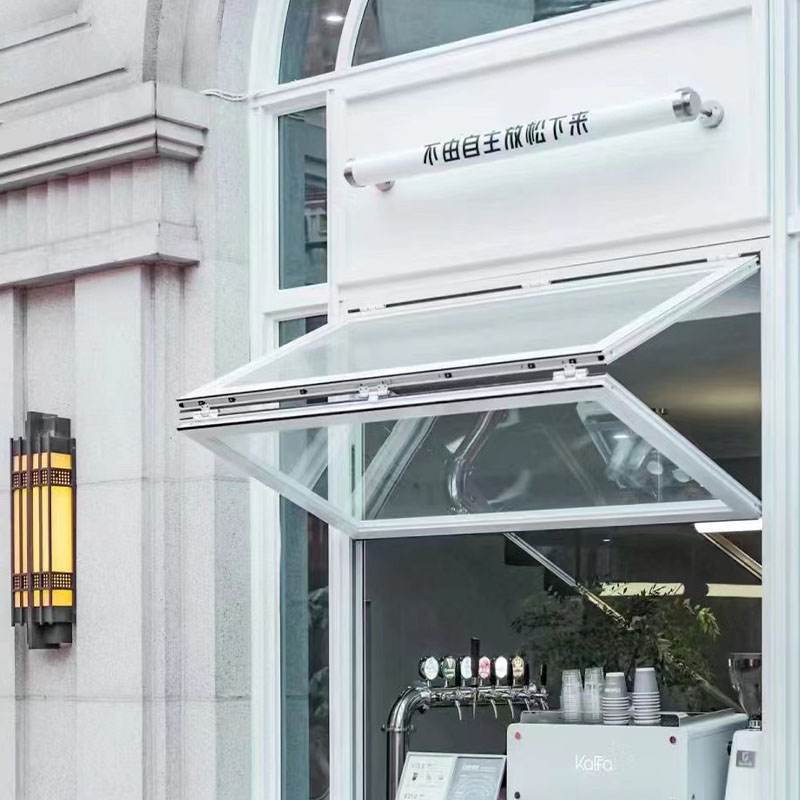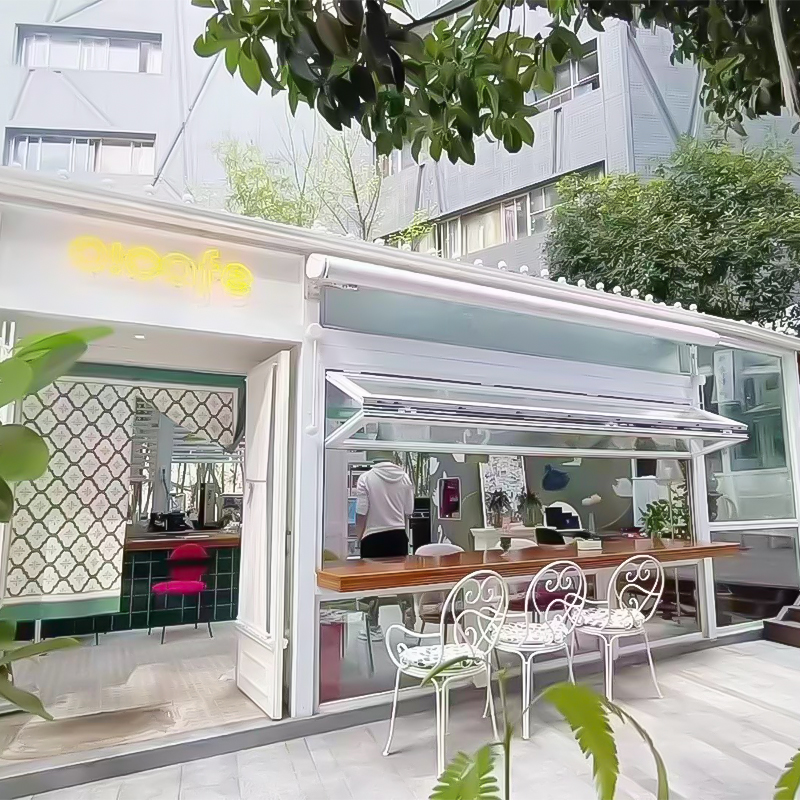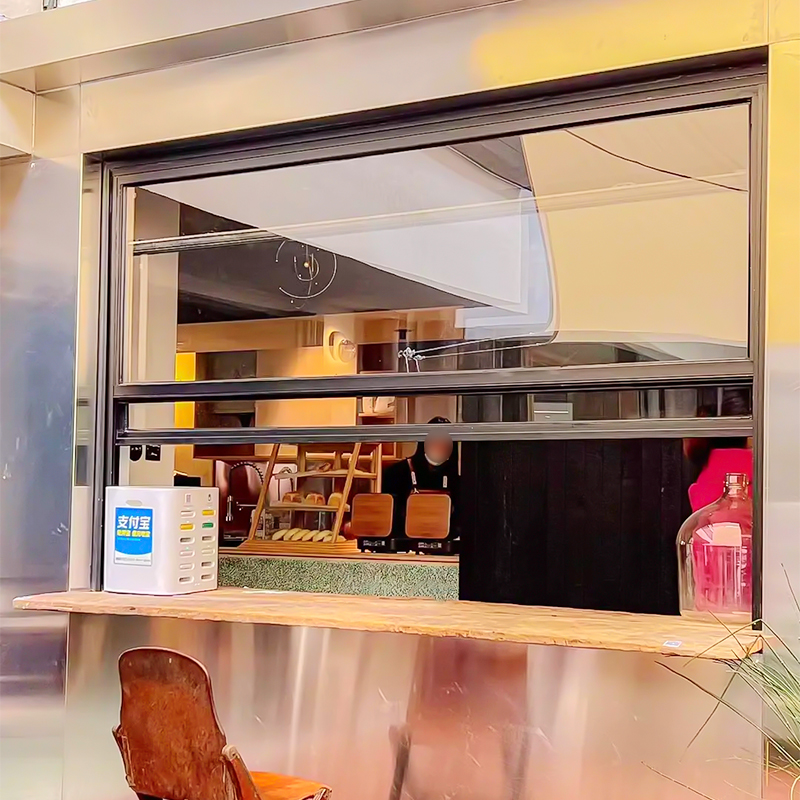Does the mechanical transmission structure ensure that the manual lift window maintains a stable and smooth operating feel during long-term use?
Release Time : 2025-09-25
In modern automotive design, the window lift system, as a frequently used component, directly impacts driver and passenger comfort and satisfaction due to its high reliability and ease of operation. Compared with electric lift windows that rely on motor drive, manual lift windows use a purely mechanical transmission structure, which realizes the up and down movement of glass through the coordinated operation of crank handles, gear sets and guide rails. This seemingly traditional design actually reflects a deep consideration for durability and stability. Its core advantage lies in the inherent physical control and robustness of the mechanical structure, ensuring consistent and smooth operation even with frequent use.
The transmission system of a manual window lift consists of several precisely engineered metal components. The rotational force from the crank handle is transmitted via a shaft to an internal worm gear mechanism, which then, through a steel cable or rack and pinion system, moves the window glass along a vertical track. These components are made of high-strength metal and have a rust-resistant surface treatment, ensuring they remain corrosion-free and dimensionally stable in various environments. The worm gear design not only efficiently converts torque but also features a self-locking mechanism, automatically locking the window in place when the handle stops moving, preventing it from sliding down due to gravity or road vibrations. This passive locking mechanism, relying solely on mechanical engagement, is a testament to the reliability of the design.
Furthermore, the mechanical transmission provides direct and predictable response. With each turn of the handle, the driver feels a clear resistance and linear movement. This intuitive control stems from the simplicity of the power path—no electrical delays, no motor start-up/shutdown lag, and no signal interruptions from electronic control modules. Users can precisely control the window opening height with subtle adjustments, whether for a small opening for ventilation or fully lowering the window, resulting in a smooth and satisfying operation.
The stability of the mechanical structure is particularly noteworthy over extended use. Since it does not involve complex electronic components, a manual window lift avoids common problems such as wiring failures, motor burnout, and switch malfunctions that plague electric systems. Even after tens of thousands of operations, as long as proper lubrication is maintained, wear between the gears and tracks remains within acceptable limits, ensuring smooth operation. Many classic cars with manual windows still function flawlessly after years of use, thanks to this simple yet robust design philosophy.
Furthermore, the mechanical structure offers greater environmental adaptability. In extreme temperatures, such as freezing winter or scorching summer, the rubber seals of electric windows may harden or expand, causing increased motor load and potential jamming. Manual window mechanisms, however, rely on manual force, allowing users to adjust the effort according to the actual resistance, preventing system overload. Moreover, manual windows can still function even if the car battery is dead or there is a circuit failure, ensuring basic ventilation and emergency needs, demonstrating exceptional reliability.
In terms of maintenance, the transparency of the mechanical system is another major advantage. If there are any issues with operation or noise, the problem is usually localized, such as lack of lubrication, loose cables, or poor gear engagement. Repair technicians can quickly locate and fix the problem through simple disassembly, without needing specialized diagnostic equipment. Users can even add grease or adjust the track position themselves, significantly reducing maintenance complexity and cost.
In summary, the mechanical transmission structure of the manual lift window, with its pure physical logic, demonstrates excellent stability and consistency in long-term use. It does not rely on external power, is immune to electromagnetic interference, and unaffected by complex electronic system failures, consistently providing reliable, intuitive, and durable operation. This time-tested design embodies engineering pragmatism and offers a reliable choice for users who value essential functionality and lasting quality.
The transmission system of a manual window lift consists of several precisely engineered metal components. The rotational force from the crank handle is transmitted via a shaft to an internal worm gear mechanism, which then, through a steel cable or rack and pinion system, moves the window glass along a vertical track. These components are made of high-strength metal and have a rust-resistant surface treatment, ensuring they remain corrosion-free and dimensionally stable in various environments. The worm gear design not only efficiently converts torque but also features a self-locking mechanism, automatically locking the window in place when the handle stops moving, preventing it from sliding down due to gravity or road vibrations. This passive locking mechanism, relying solely on mechanical engagement, is a testament to the reliability of the design.
Furthermore, the mechanical transmission provides direct and predictable response. With each turn of the handle, the driver feels a clear resistance and linear movement. This intuitive control stems from the simplicity of the power path—no electrical delays, no motor start-up/shutdown lag, and no signal interruptions from electronic control modules. Users can precisely control the window opening height with subtle adjustments, whether for a small opening for ventilation or fully lowering the window, resulting in a smooth and satisfying operation.
The stability of the mechanical structure is particularly noteworthy over extended use. Since it does not involve complex electronic components, a manual window lift avoids common problems such as wiring failures, motor burnout, and switch malfunctions that plague electric systems. Even after tens of thousands of operations, as long as proper lubrication is maintained, wear between the gears and tracks remains within acceptable limits, ensuring smooth operation. Many classic cars with manual windows still function flawlessly after years of use, thanks to this simple yet robust design philosophy.
Furthermore, the mechanical structure offers greater environmental adaptability. In extreme temperatures, such as freezing winter or scorching summer, the rubber seals of electric windows may harden or expand, causing increased motor load and potential jamming. Manual window mechanisms, however, rely on manual force, allowing users to adjust the effort according to the actual resistance, preventing system overload. Moreover, manual windows can still function even if the car battery is dead or there is a circuit failure, ensuring basic ventilation and emergency needs, demonstrating exceptional reliability.
In terms of maintenance, the transparency of the mechanical system is another major advantage. If there are any issues with operation or noise, the problem is usually localized, such as lack of lubrication, loose cables, or poor gear engagement. Repair technicians can quickly locate and fix the problem through simple disassembly, without needing specialized diagnostic equipment. Users can even add grease or adjust the track position themselves, significantly reducing maintenance complexity and cost.
In summary, the mechanical transmission structure of the manual lift window, with its pure physical logic, demonstrates excellent stability and consistency in long-term use. It does not rely on external power, is immune to electromagnetic interference, and unaffected by complex electronic system failures, consistently providing reliable, intuitive, and durable operation. This time-tested design embodies engineering pragmatism and offers a reliable choice for users who value essential functionality and lasting quality.








